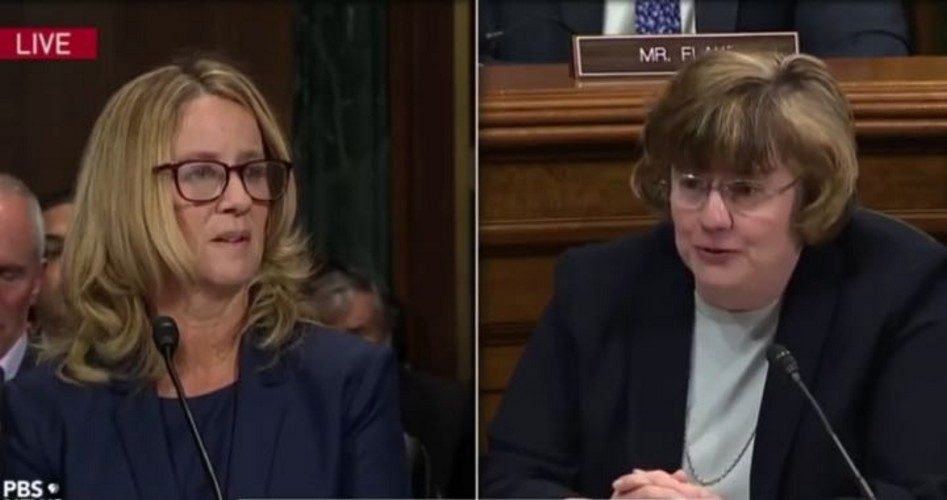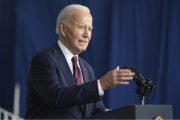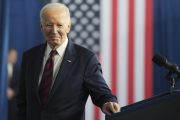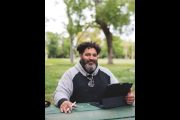
Rachel Mitchell (shown on right), the veteran sex crimes prosecutor who questioned Christine Blasey Ford about her accusation against U.S. Supreme Court nominee Brett Kavanaugh, concluded that Ford’s account is too shaky to have opened a case against the judge. The Mitchell Memorandum can be read in its entirety here.
As well, she averred, “The activities of congressional Democrats and Dr. Ford’s attorneys likely affected Dr. Ford’s account.”
Mitchell’s highly detailed memorandum, dated September 30, dissects a cloudy, inconsistent, and sometimes contradictory story.
A “‘he said, she said’ case is incredibly difficult to prove,” Mitchell wrote. “But this case is even weaker than that. Dr. Ford identified other witnesses to the event, and those witnesses either refuted her allegations or failed to corroborate them.”
Thus, she concluded, “I do not think that a reasonable prosecutor would bring this case based on the evidence before the Committee. Nor do I believe that this evidence is sufficient to satisfy the preponderance-of-the-evidence standard.”
Murky Claims
“Dr. Ford has not offered a consistent account of when the alleged assault happened,” Mitchell wrote, noting that the night in question occurred anywhere from the “early 80s” to the “mid 1980s” to “one ‘high school summer in early 80’s.”
Also in question is Ford’s age at the time. The Washington Post “reported that notes from an individual therapy session in 2013 show her describing the assault as occurring in her ‘late teens.’ But she told the Post and the Committee that she was 15 when the assault allegedly occurred. She has not turned over her therapy records for the Committee to review.”
“While it is common for victims to be uncertain about dates,” Mitchell wrote, “Dr. Ford failed to explain how she was suddenly able to narrow the timeframe to a particular season and particular year.”
As well, “Dr. Ford has struggled to identify Judge Kavanaugh as the assailant by name,” Mitchell wrote. “No name was given” in either “her 2012 marriage therapy notes” or in her “2013 individual therapy notes.”
Tellingly, “Ford’s husband claims to recall that she identified Judge Kavanaugh by name in 2012” when Kavanaugh’s name appeared “in the press as a potential Supreme Court nominee if Governor Romney won the presidential election.”
As well, “Dr. Ford has no memory of key details of the night in question — details that could help corroborate her account.”
Among the problems there are these:
• She does not remember who invited her to the party or how she heard about it.
• She does not remember how she got to the party.
• She does not remember in what house the assault allegedly took place or where that house was located with any specificity.
• Perhaps most importantly, she does not remember how she got from the party back to her house.
Though “Ford was able to describe hiding in the bathroom, locking the door, and subsequently exiting the house,” Mitchell wrote, “she has no memory of who drove her or when. Nor has anyone come forward to identify him or herself as the driver.”
Best Friend: What Are You Talking About?
Mitchell noted another big hole in Ford’s story: “Ford has named three people other than Judge Kavanaugh who attended the party — Mark Judge, Patrick “PJ” Smyth, and her lifelong friend Leland Keyser (née Ingham). Dr. Ford testified to the Committee that another boy attended the party, but that she could not remember his name. No others have come forward.”
But, Mitchell wrote, “all three named eyewitnesses have submitted statements to the Committee denying any memory of the party whatsoever,” and Keyser’s attorney wrote that Keyser “does not know Mr. Kavanaugh and she has no recollection of ever being at a party or gathering where he was present, with, or without, Dr. Ford.” And in another statement to the committee, the attorney wrote that “the simple and unchangeable truth is that she is unable to corroborate [the allegations] because she has no recollection of the incident in question.”
Nor did Ford offer “a consistent account of the alleged assault,” Mitchell wrote, including what she heard when she was hiding in the bathroom.
• And “her account of who was at the party has been inconsistent:”
• According to the Washington Post’s account of her therapy notes, there were four boys in the bedroom in which she was assaulted.
• She told the Washington Post that the notes were erroneous because there were four boys at the party, but only two in the bedroom.
• In her letter to Senator Feinstein, she said “me and 4 others” were present at the party.
• In her testimony, she said there were four boys in addition to Leland Keyser and herself. She could not remember the name of the fourth boy, and no one has come forward.
Ford “struggled to remember her interactions with the Washington Post” and couldn’t remember whether she took her polygraph on the day of her grandmother’s funeral.
Mitchell noted the wild discrepancy between Ford’s supposed fear of flying and a jet-setting lifestyle that has taken her to remote islands in the South Pacific and, annually, to Washington, D.C.
Mitchell also questioned the very dubious claim, particularly from a woman with a doctorate, that she didn’t know how to contact her senator.
Image of Rachell Mitchell and Christine Blasey Ford: Screenshot of PBS video of Kavanaugh hearing



